The Korakuen Garden in Okayama is rated as one of the top 3 gardens in Japan. That’s high praise in a country with so much natural beauty and so many highly prized gardens. Having visited though I’d have to agree that this garden is something really special.
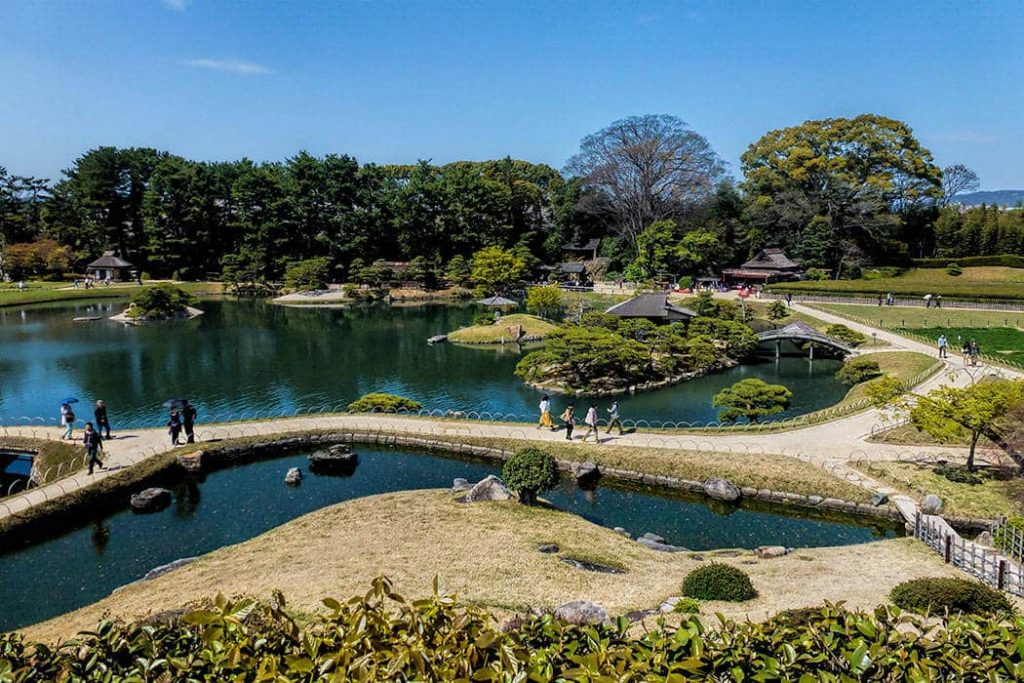
We arrived in Okayama on the shinkansen from Kyoto, a trip that takes just over an hour making it an easy day trip. It’s even quicker from Hiroshima at just 35 minutes each way. You can combine a visit to the gardens with exploring Okayama city, exploring the castle grounds or catch a local train slightly further afield and hire a bike to cycle through the shrines, temples and rice paddies of the Kibi Plains.
Table of Contents
The history of Korakuen Garden
The gardens are located across the Asahi River from Okayama Castle. They were founded in 1687 by Ikeda Tsunamasa who was the Daimyo or feudal lord at the time. The gardens were completed in 1700 and used for entertaining important guests and the relaxation of the Daimyo but even at that time, there were days when they were open for general viewing. In 1884 they were handed over to Okayama Prefecture and opened to the public.
Korakuen has retained its overall design and structure over the centuries with only minor changes by the various subsequent Daimyo. Fortunately, many documents and Edo period paintings remain meaning that its development over time can be tracked with some accuracy. In the floods of 1934, the gardens were severely damaged.
In 1945 bombing raids destroyed most of the castle and the garden was again severely damaged but due to the excellent records of the Ikeda family, it was able to be faithfully restored and is consistent with the garden enjoyed during the Edo period. Since 1952 it has been protected as a cultural asset under its designation as a special place of scenic beauty.
Flowers for every month of the year
One of the attractions and strengths of Korakuen is that it is planted to enjoy unique features and flowerings in each season. The year starts with winter camellias giving way to cheery daffodils. Then the early signs of spring are on the way with the many colours and fragrances of plum blossoms (ume).
Sakura follows with a variety of trees planted to ensure a longer blossom season. Azaleas and Peonies take centre stage during the warmer months and of course, the colours of autumns leaves make a stunning display, I’d love to revisit the garden during ‘kouyou’.
We were very happy with our choice of mid-April for a visit. Technically the cherry blossoms had passed their prime and we were into Hana Fubuki (petal fall) but we were happy to be showered in drifts of sweet petals throughout the day.
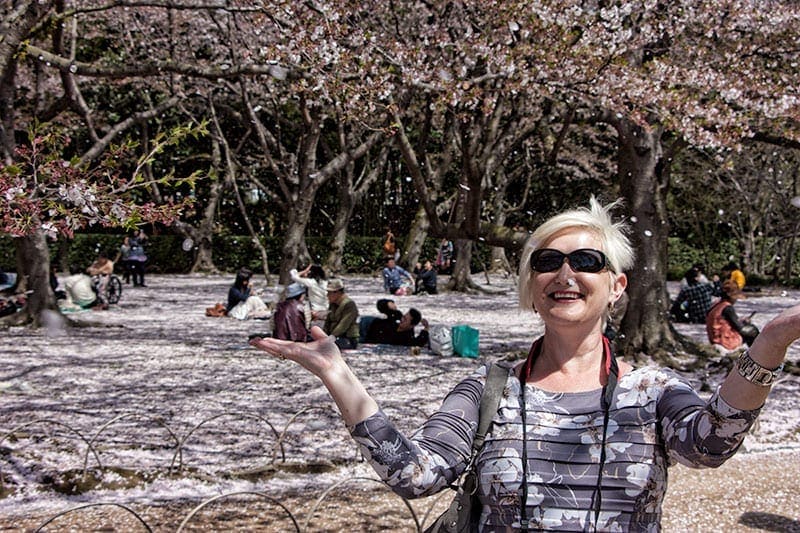
Some Garden highlights
1. Renchi-ken Rest House
Located near the south (castle) entrance this rest house is one of the few buildings to survive the WWII bombing. The stone bridge and small islands have been in place since the Edo period. The view out from here highlights the contour and undulations of the garden structure very well.
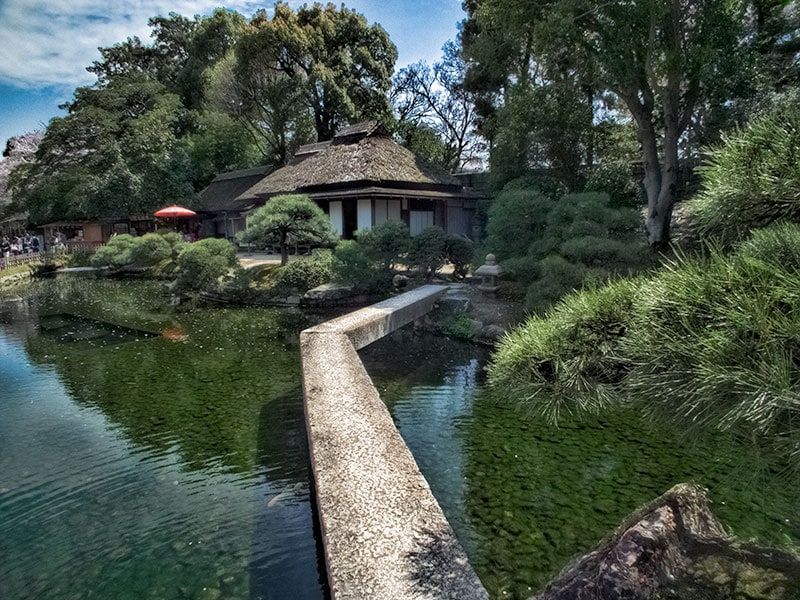
2. Sawa-no-ike Pond
The large pond is central to the garden and designed to be viewed from many angles and elevations. There are several islands on the southeastern side of the lake as you can see in the photo at the top of the page taken from the artificial ‘mountain’. Naka-no-Shima island was one of the ones you could walk across too which houses the Shima-Jaya Teahouse. This boat and boathouse is near the bridge onto Mino-Shima island with its fishing palace.
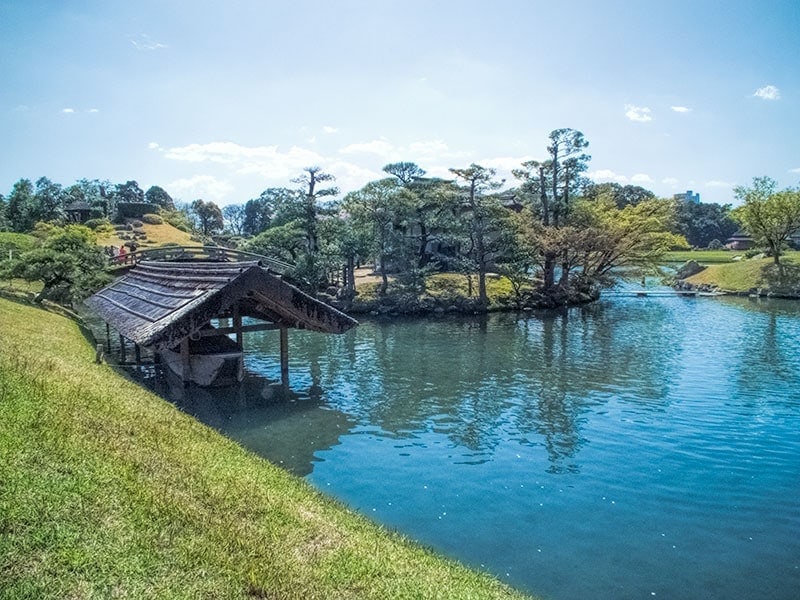
3. Sotetsu batake
The cycad trees are obviously quite old and well established to have reached this size. We do get these a lot in Queensland but rarely see them with trunks like this and never in this density.
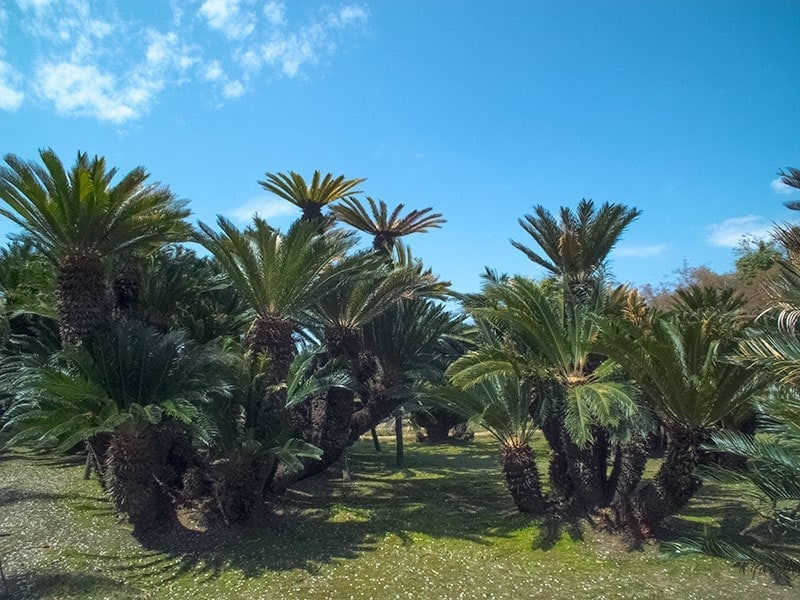
4. Yuishinzan Hill
Some changes were made to the garden by a new Daimyo, Yuishinzan Hill was one of these being built when Ikeda Tsugumasa took over from his father Ikeda Tsunamasa. It gave a more sculptured aspect to the garden and a vantage point to enjoy the view from close elevation, without blocking the view from the castle of course. One side of the hill is heavily planted in azaleas and rhododendrons but we were too early in the year to see their full beauty.
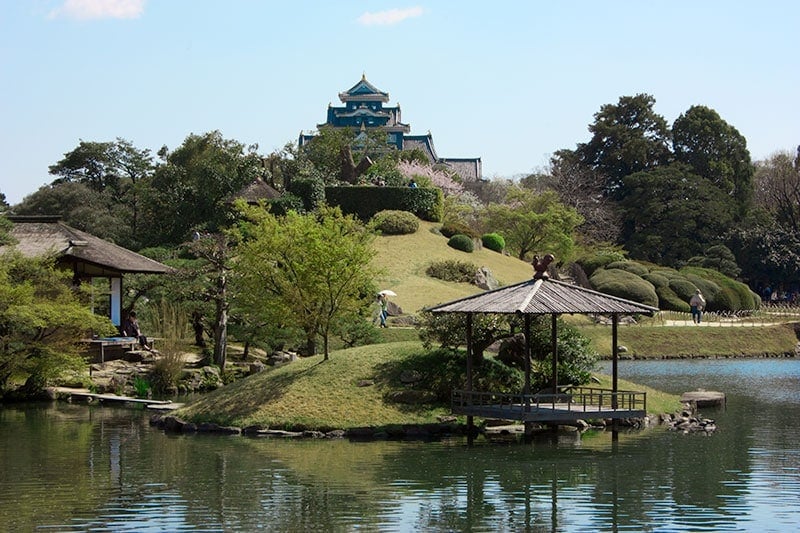
5. Ryuten Rest House
This unusual structure was used by the feudal lord as a resting place as he strolled through the garden. It would have been a cool place on a hot day with the shady trees and stream passing right through the building, unfortunately, my inside photo didn’t turn out, I was having a real challenge with the spring light. There are rocks placed strategically in the stream and coloured pebbles scattered around too. This is an original building that fortunately was undamaged during WWII.
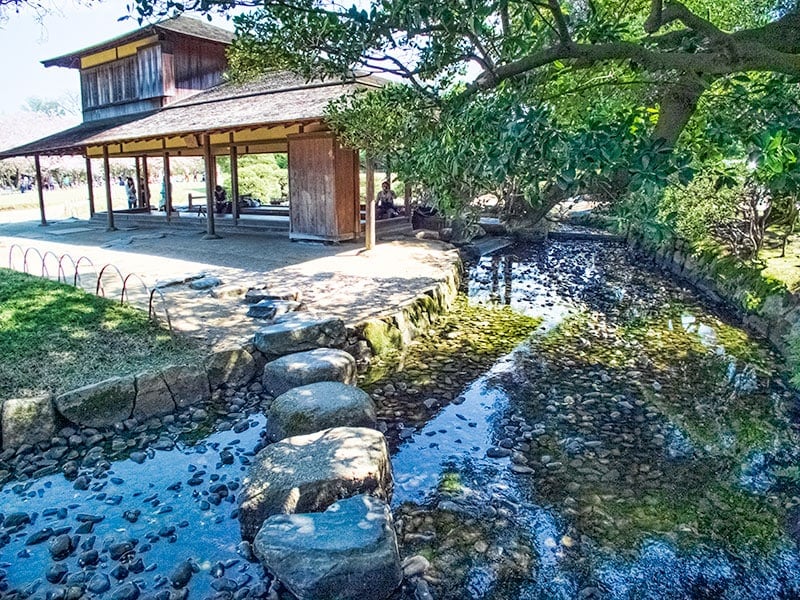
6. Sakura and Hanafubuki
You can’t visit Japan during the few weeks of cherry blossom and not comment on it, it really is so very beautiful. Hanami is gatherings organised to take place under the blossom trees and they occur all around the country but we noticed quite a difference in spots such as Okayama and Nagahama over the bigger cities of Tokyo, Osaka and Kyoto.
The gatherings were far more family-oriented and the number of younger and older participants was really noticeable. In the bigger cities, the events were much more dominated by young adult groups and business groups. I loved watching the children play in the fallen petals and everyone was relaxed and friendly.
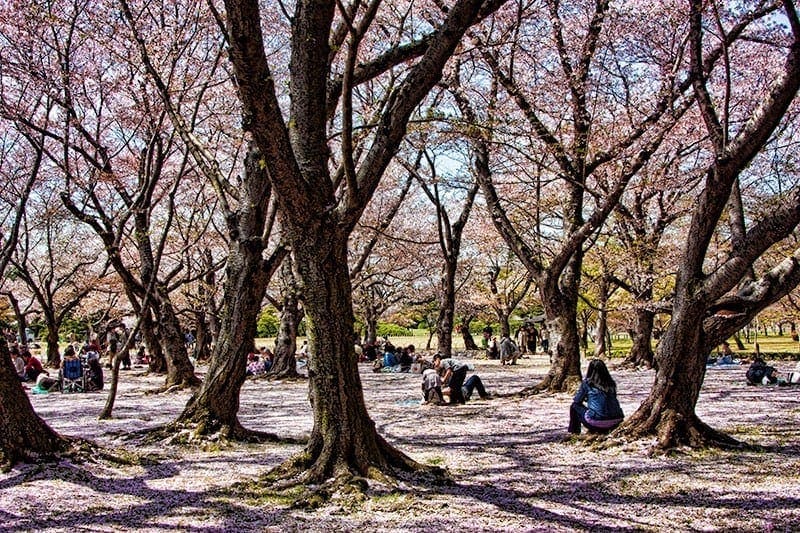
The peak of sakura is when the most blossom is on the tree but another much-anticipated part of the season is Hana Fubuki or the blizzard of petals (Hana = flower and Fubuki = snowstorm). This is what we experienced in Okayama.
I was told that if you catch a falling petal in your hand or in your drink then it is a sign of good fortune smiling on you for the year. Of course, I had to try to catch a petal or two but watching the little children trying was so cute.
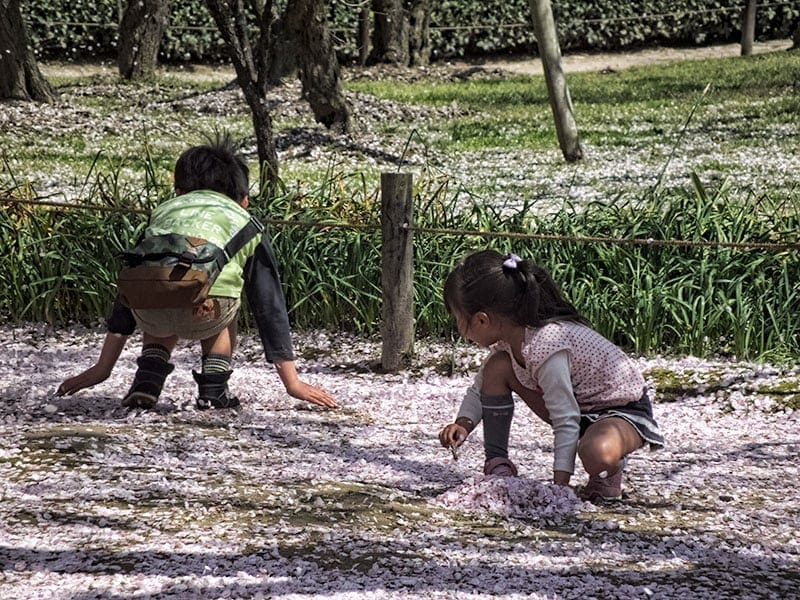
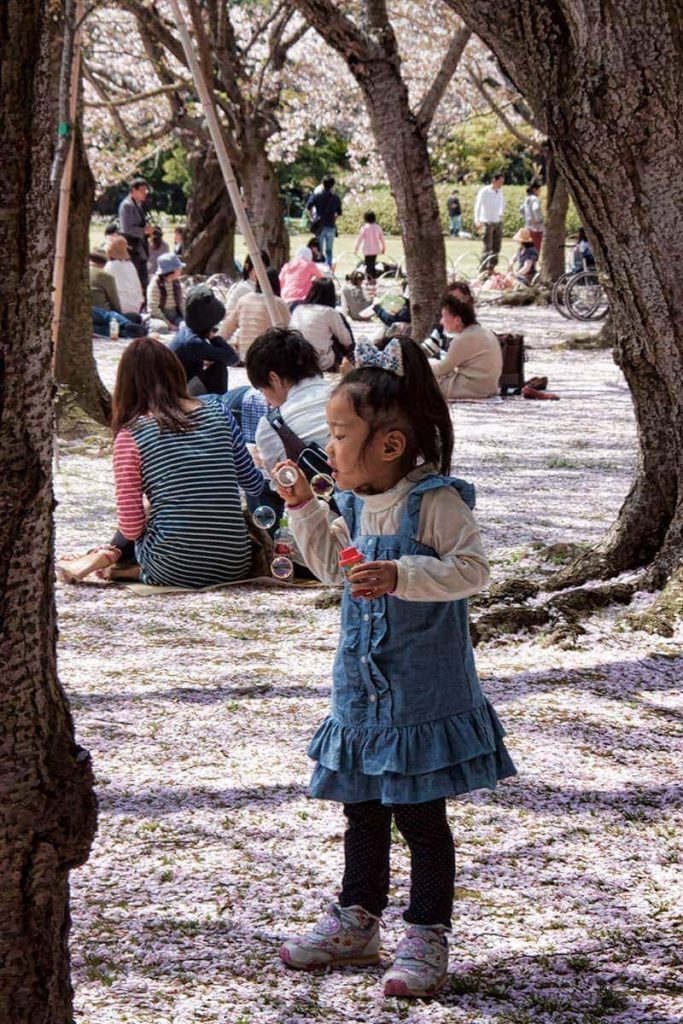
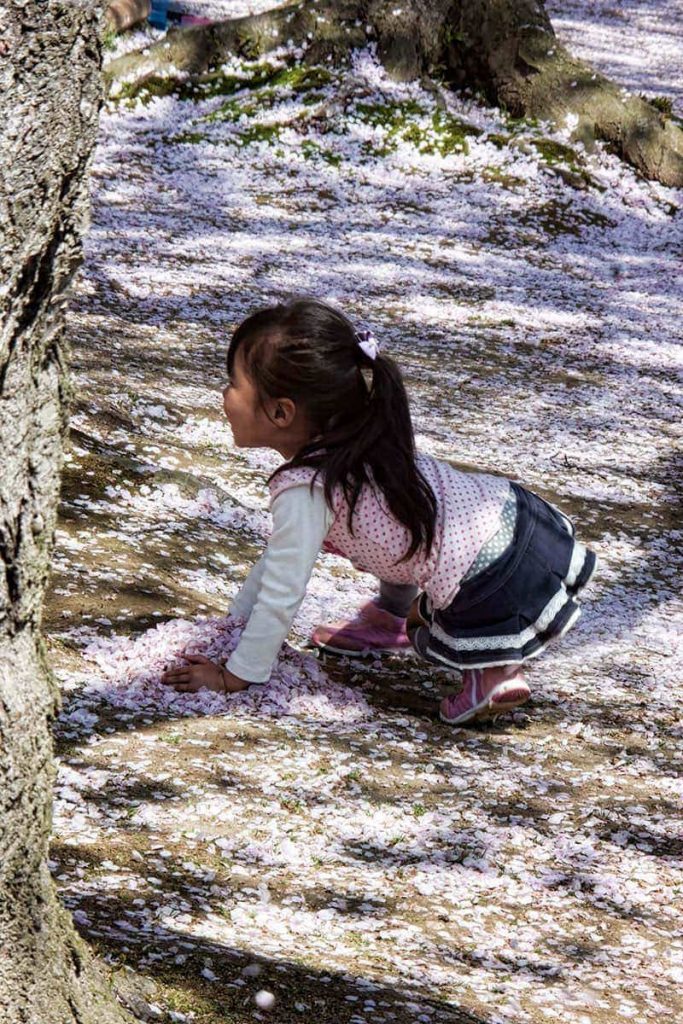
Korakuen Visitor information
Okayama is located on the Sanyo Shinkansen line between Osaka and Hiroshima and using the super fast trains makes it an easy day trip from either city. If you are using a JR Pass for your travels the cost of the trip is fully covered by the pass.
Walking from the Okayama train station to Korakuen gardens is about 1.5km and will take about 25 minutes. It’s a direct path with some English signage along the way to assure you that you’re on the right path.
This will take you to the south gate which is across the bridge from the castle. We like to walk as it gives a chance to look around but if you’re short of time or prefer not to walk the distance you can catch a light rail to Shiroshita Station. It takes about 5 minutes, runs frequently and will cost Y100.
Entry to Korakuen gardens in Okayama is Y400 for adults and Y140 for children. It’s open from 7.30 am to 6.00 pm in spring and summer, or 8 am to 5 pm in Autumn and Winter.
A map of the garden is available on the Korakuen official website.
Interested? Pin these images in Pinterest
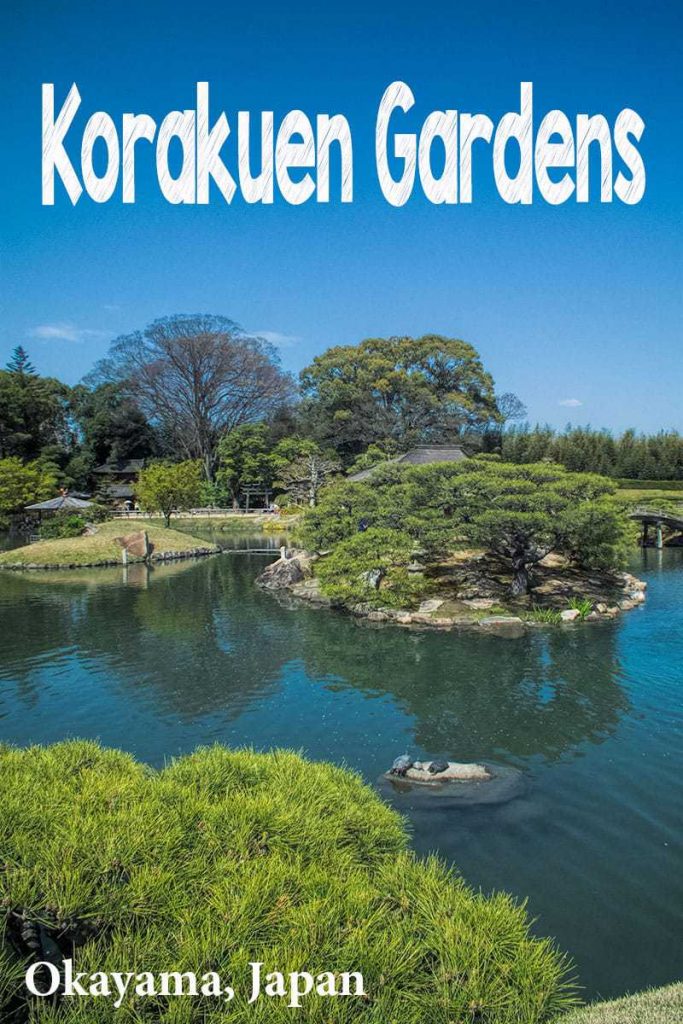
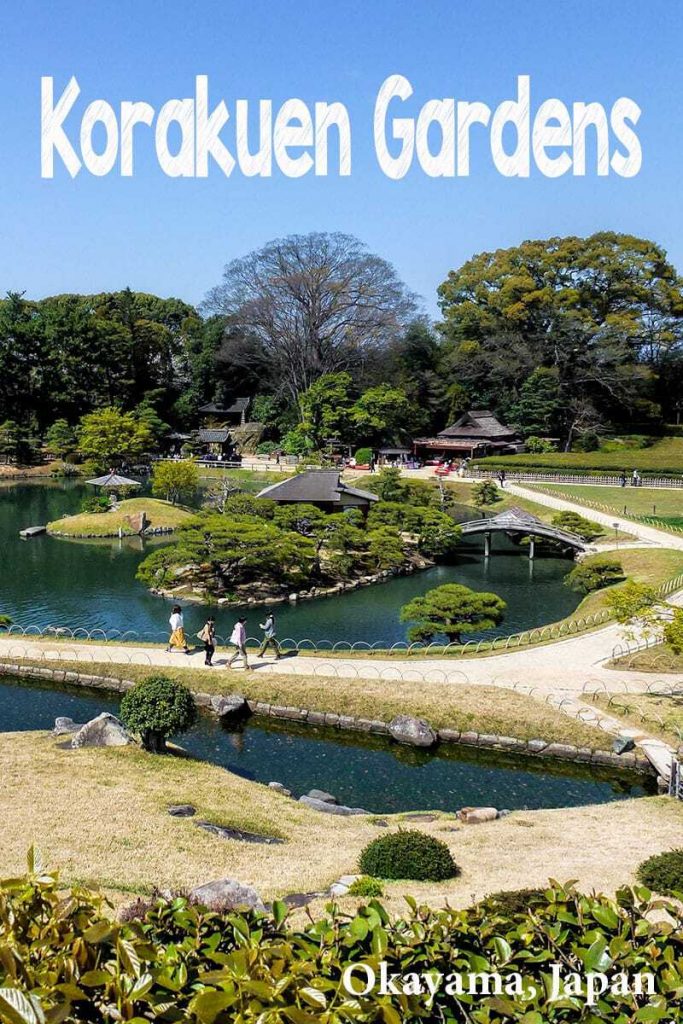
antonette - we12travel
Tuesday 15th of December 2015
This garden looks exactly how I'd imagine a Japanese garden to look like. I've never been to Japan although it was our second choice after Tasmania, where we'll go to in February. I'm sure we'll head to Japan sometime soon afterwards so will keep this one in mind for future trip planning!
Stephanie
Monday 14th of December 2015
Belive it or not I've never even heard of Okayama! The gardens look so beautiful. You were so lucky to visit when the sakuras were blossoming, beautiful! I love the many parks in Fukuoka city. I think they really make a city livable.
2 Aussie Travellers
Tuesday 15th of December 2015
It's a great area and not really that far from Fukuoka by bullet train. I'd like to spend more time in Fukuoka on our next visit, we only got down there for a day and it rained so much that we mostly drank coffee and ate while waiting for it to stop. Is that where you are based?
Andrea Leblang
Monday 14th of December 2015
This post made me so excited, Tori! I am headed there towards the beginning of April. Excited to see everything in full bloom, although I do think that you visited during a very special time. Loved the picture of you being showered with petals!
Carolann & Macrae - One Modern Couple
Monday 14th of December 2015
How absolutely beautiful! We didn't make it to Okayama but looking at your photos it's definitely understandable how it would make top 3. Visiting during cherry blossom season would be amazing but through hanafubuki must have been spectacular!
Sue @NoFixedAbodeForSue
Monday 14th of December 2015
What a wonderful time of the year to visit, the cherry blossoms look so pretty. I only had 2 days in Tokyo when I visited Japan so I would love to return and see more of this fascinating country. It's interesting to read reports about places that are off the regular tourist routes
2 Aussie Travellers
Monday 14th of December 2015
Thanks for dropping by Sue. A couple of days would definitely whet your appetite for a return visit!